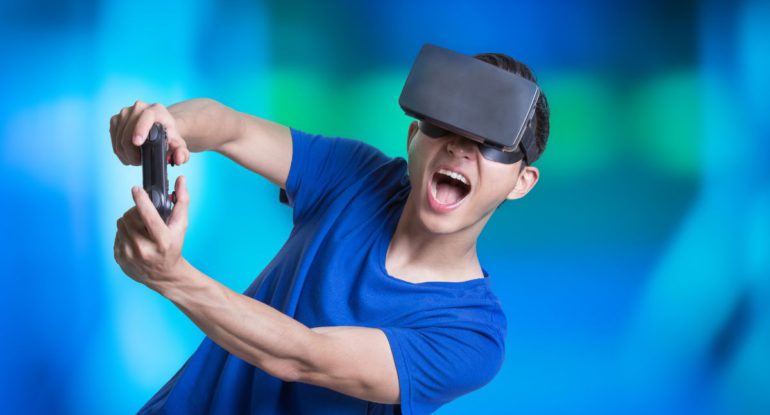Top 6 Intriguing Ways Blockchain Gaming Is Making Use Of Social Media

Blockchain technology has significantly impacted various industries, and one of the most exciting areas of innovation is blockchain gaming. These games incorporate the use of cryptocurrencies, non-fungible tokens (NFTs), and decentralized applications (DApps) to provide players with unique gaming experiences. Social media plays a vital role in the success and growth of blockchain gaming. In this article, we’ll explore how social media is shaping the world of blockchain gaming.
Top 6 ways social media is shaping Blockchain gaming

1. Community Building and Engagement
Social media platforms like Twitter, Discord, Telegram, and Reddit have become hubs for blockchain gaming communities. Gamers and developers gather on these platforms to discuss new games, strategies, and the latest trends in the blockchain gaming space. These communities foster a sense of belonging and engagement, which is crucial for the success of any game.
Blockchain gaming projects often use social media to announce updates, upcoming events, and important developments. Community members can provide feedback, suggest improvements, and even participate in governance decisions through social media channels.
2. NFT Promotion
Non-fungible tokens (NFTs) are a fundamental component of blockchain gaming. These unique digital assets can represent in-game items, characters, or even entire game worlds. Social media platforms allow developers to showcase and promote NFTs, generating interest and demand among players and collectors.
Creators and artists often use platforms like Instagram and Twitter to display their NFT art collections, attracting both gamers and art enthusiasts. Social media’s visual nature makes it an ideal medium for sharing NFTs and driving their adoption.
3. Marketing and Player Acquisition
Social media serves as a powerful marketing tool for blockchain gaming projects. Game developers can run targeted advertising campaigns on platforms like Facebook and Instagram to reach a wider audience. Paid promotions, giveaways, and influencer collaborations can create buzz around new games and attract players.
Furthermore, blockchain gaming projects can utilize blockchain-based referral systems, where players are rewarded for bringing in new users. Social media is an effective channel for sharing referral links and attracting potential players.
4. Live Streaming and Content Creation
Platforms like Twitch and YouTube have a massive influence on the gaming industry, including blockchain gaming. Gamers and content creators can livestream their gameplay, showcase their NFT collections, and engage with their audiences in real-time.
Live streaming allows players to demonstrate the gameplay mechanics, the value of in-game assets, and the overall experience of blockchain games. This can encourage viewers to join the community and start playing themselves.
5. Educational Resources
Social media also serves as a platform for sharing educational content about blockchain gaming. Developers and experienced gamers often create tutorials, guides, and explainer videos on platforms like YouTube and Medium. These resources help newcomers understand the intricacies of blockchain technology, NFTs, and the specific mechanics of blockchain games.
6. In-Game Social Features
Some blockchain games are designed to integrate social features directly into the gameplay. Players can connect with others, form alliances, trade NFTs, and participate in social events within the virtual worlds of these games. These in-game social interactions are often closely tied to social media platforms, as players share their in-game achievements and experiences with their online communities.
#LUKSO mainnet is now live! Unleashing a world of decentralized creativity and empowerment. From fashion to gaming, design to social media, LUKSO is transforming the way we connect, create, and own in the digital realm 🦩
Today marks the dawn of a new age in blockchain ⚡️🆙 https://t.co/d2p7CSx4kr pic.twitter.com/FwmgvS1Tk1
— Melozie 🐉🆙 (@melozie888) May 23, 2023
Here are four additional ways in which social media is shaping blockchain gaming:
- Tokenized Social Features: Social media platforms are exploring the integration of blockchain-based tokens and smart contracts to introduce new social features and interactions. These tokenized features may include tipping mechanisms, virtual gifting, and peer-to-peer microtransactions, allowing users to support their favorite content creators and engage with their social network in more meaningful ways. By leveraging blockchain technology, social media platforms can enhance user engagement and incentivize valuable contributions within the community.
- Decentralized Social Networks: Blockchain technology enables the creation of decentralized social media platforms that prioritize user privacy, data ownership, and censorship resistance. Decentralized social networks built on blockchain protocols allow users to interact, share content, and build communities without relying on centralized intermediaries. By integrating blockchain gaming features and incentives, decentralized social networks can foster a vibrant ecosystem of gamers, content creators, and enthusiasts, facilitating organic growth and community-driven innovation.
- User-Generated Content Marketplaces: Social media platforms can serve as marketplaces for user-generated content, including digital assets, game mods, and customizations created by players. By leveraging blockchain technology and non-fungible tokens (NFTs), social media networks can enable creators to tokenize and monetize their content, establishing new revenue streams and empowering creative expression. These content marketplaces can drive engagement, foster collaboration, and enable players to personalize their gaming experiences while contributing to the overall growth of the blockchain gaming ecosystem.
- Social Tokens and Community Governance: Social media platforms can issue their own native tokens or leverage existing blockchain protocols to create social tokens that represent ownership, voting rights, or membership privileges within the community. These social tokens can be used to incentivize user participation, reward contributions, and facilitate community governance decisions such as platform updates, content moderation, and community events. By integrating social tokens and decentralized governance mechanisms, social media platforms can empower their users to collectively shape the direction and culture of the platform, fostering a sense of ownership and belonging among community members.
In summary, the convergence of social media and blockchain gaming is driving innovation, collaboration, and community-driven growth across both industries. By embracing blockchain technology, social media platforms can introduce new social features, decentralized governance models, and tokenized incentives that empower users and foster vibrant ecosystems of gamers, content creators, and enthusiasts. As the relationship between social media and blockchain gaming continues to evolve, the boundaries between virtual worlds, digital economies, and social interactions will become increasingly blurred, ushering in a new era of immersive, decentralized, and community-centric gaming experiences.
Benefits of Social Media in Blockchain Gaming:
1. Community Building and Engagement:
Benefits:
- Stronger Communities: Social media platforms like Twitter, Discord, Telegram, and Reddit allow blockchain gaming projects to build and nurture strong communities. Gamers, developers, and enthusiasts can come together to discuss games, strategies, and industry developments.
- Instant Communication: Social media provides real-time communication, enabling developers to engage with players, gather feedback, and address issues promptly.
- Market Feedback: Developers can use social media to gauge market sentiment and understand player preferences, helping them tailor their games to the desires of the community.
2. Marketing and Player Acquisition:
Benefits:
- Targeted Marketing: Social media offers advanced targeting options for marketing campaigns. Developers can reach potential players based on demographics, interests, and behavior.
- Buzz Creation: Paid promotions, giveaways, and influencer collaborations on social media can create buzz around new blockchain games, attracting players.
- Viral Marketing: Viral marketing strategies can quickly gain traction on social media, spreading the word about a game to a wide audience.
3. NFT Promotion:
Benefits:
- Showcasing NFTs: Social media platforms with visual components, such as Instagram and Twitter, are excellent for showcasing and promoting NFTs. Artists and creators can display their NFT art collections, attracting gamers and art enthusiasts.
- Marketplace Integration: Some blockchain gaming platforms integrate NFT marketplaces directly into the game interface, allowing players to seamlessly buy, sell, and trade in-game assets via social media.
4. Live Streaming and Content Creation:
Benefits:
- Real-Time Engagement: Platforms like Twitch and YouTube enable gamers and content creators to engage with their audiences in real time. Live streams and video content allow gamers to showcase their gameplay and NFT collections, encouraging others to join the community.
- Educational Content: Social media is a hub for educational content related to blockchain gaming. Creators can produce tutorials, guides, and explainer videos, helping newcomers understand the intricacies of blockchain technology and the specific mechanics of blockchain games.
5. In-Game Social Features:
Benefits:
- Enhanced Gameplay: Some blockchain games integrate social features directly into gameplay, allowing players to form alliances, trade NFTs, and participate in social events within virtual worlds.
- Cross-Platform Interaction: Social media bridges the gap between players on different platforms, enabling them to connect and share in-game experiences.
Drawbacks of Social Media in Blockchain Gaming:
1. Scams and Fraud:
Drawbacks:
- Scam Projects: The anonymity and lack of regulation on social media can make it a breeding ground for fraudulent blockchain gaming projects. Players may fall victim to scams or Ponzi schemes.
- Fake NFTs: Social media can be used to promote fake or counterfeit NFTs, deceiving collectors and investors.
2. Overemphasis on Speculation:
Drawbacks:
- Speculative Hype: Social media can contribute to speculative bubbles in the blockchain gaming industry, with some players more interested in the potential financial gains from NFTs than the actual gameplay.
3. Negative Publicity and Misinformation:
Drawbacks:
- Spread of FUD: Social media can amplify fear, uncertainty, and doubt (FUD) about specific blockchain games or projects. False or misleading information can harm the reputation of legitimate projects.
- Gamer Harassment: The anonymity of social media sometimes leads to online harassment and toxicity within gaming communities, discouraging new players from joining.
4. Privacy Concerns:
Drawbacks:
- Data Privacy: Players and users of blockchain gaming platforms may have concerns about the privacy of their personal information when engaging on social media platforms.
5. Platform Dependency:
Drawbacks:
- Platform Reliance: The success of a blockchain gaming project can become heavily reliant on a specific social media platform. Changes in platform policies or algorithms can impact a game’s visibility and user base.
Also, read – Blockchain Gaming: A Solution To In-Game Item Duplication And Fraud
Conclusion
The social media landscape and the burgeoning world of blockchain gaming are not merely intersecting, they are harmoniously composing a future brimming with potential. From nurturing vibrant communities to amplifying marketing efforts, from fostering player feedback to propelling esports onto the blockchain stage, the melodies of social media are shaping the very foundation of how we experience and engage with blockchain games.
This symbiotic relationship extends beyond mere communication channels. Social media empowers players to become active participants in the narrative. Livestreams, reviews, and creative content paint a vivid picture of the blockchain gaming experience, influencing public perception and driving innovation within the industry itself. The “play-to-earn” model, fueled by social media’s ability to showcase success stories and foster collaboration, adds another layer of engagement, blurring the lines between play and financial opportunity.
However, this symphony is not without its discordant notes. Concerns about the centralization inherent in some social media platforms clash with the decentralized ideals of blockchain gaming. Navigating regulatory landscapes and ensuring responsible monetization models remain ongoing challenges.
Yet, the future melody remains optimistic. As developers embrace the power of social media and players continue to actively shape the narrative, blockchain gaming has the potential to evolve into an experience that is not just immersive and engaging, but also socially enriching and economically empowering. The final verse of this story is yet to be written, but the opening bars hold the promise of a harmonious future where social media and blockchain gaming create a symphony of innovation and engagement that resonates with players worldwide.
Remember, this conclusion is just one possible interpretation. You can adapt it to fit your specific needs and the overall tone of your writing. Don’t hesitate to add your own unique insights and perspectives!





























































